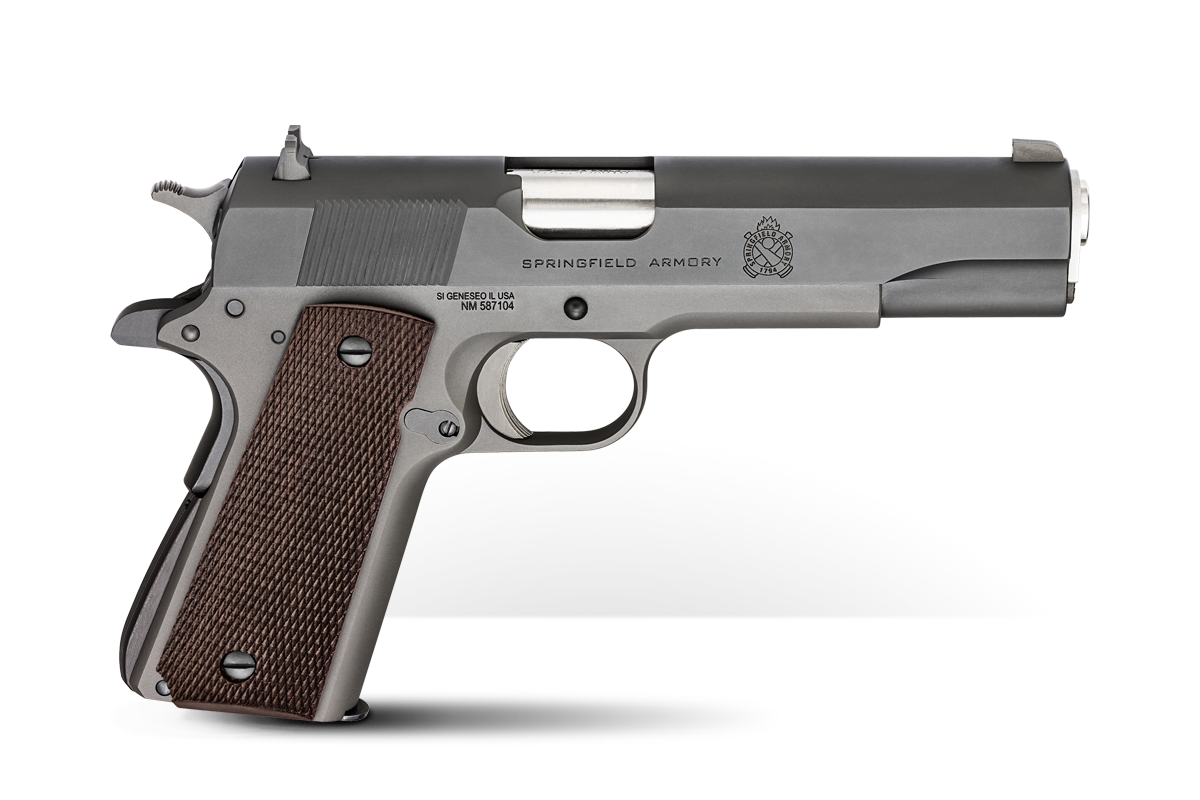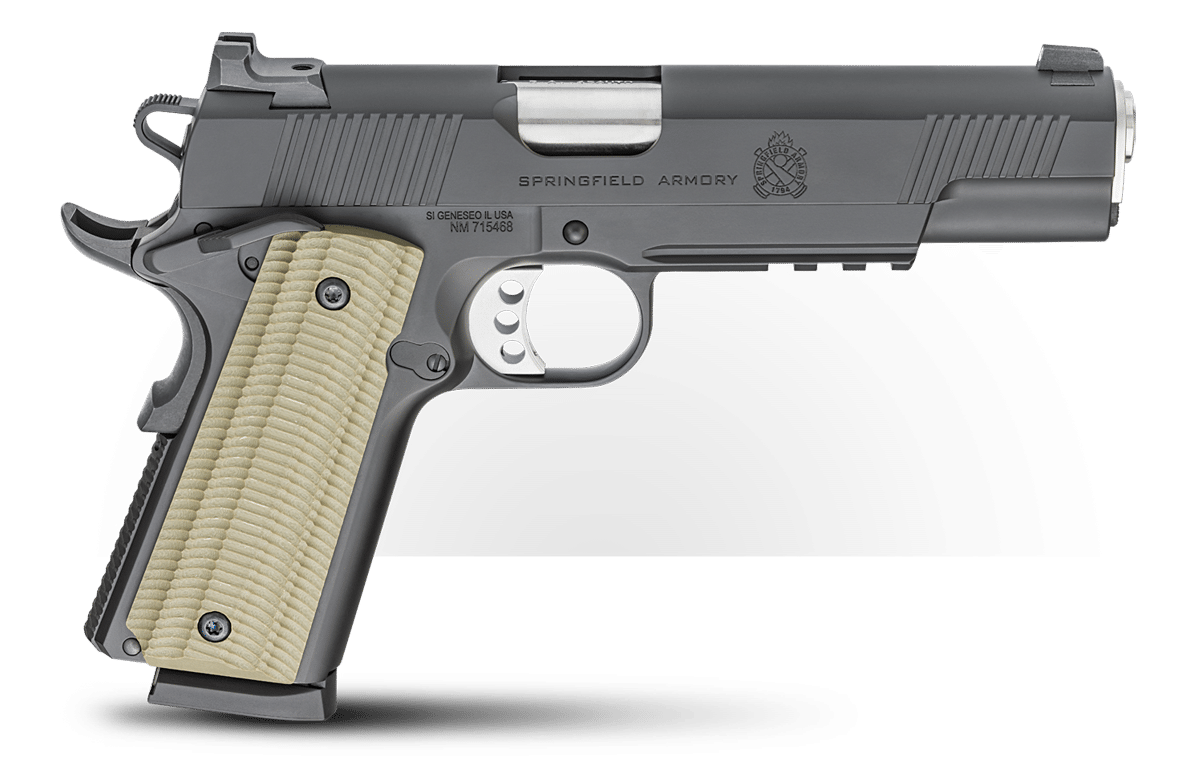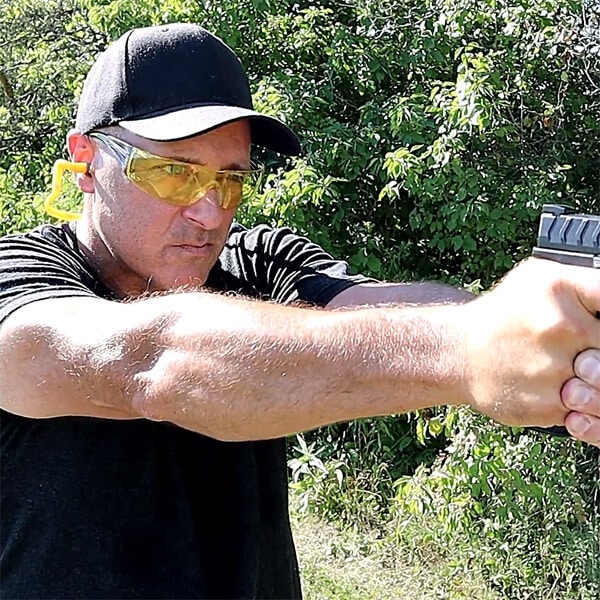On December 20th, 2021, Springfield Armory released their new 1911 called the Operator. It’s a beautiful 1911 with VZ G10 grips and a semi-gloss black Cerakote frame and slide. It has a 5” match-grade barrel and comes with two eight-round .45 ACP magazines. Continuing with the modern 1911 features, the Operator has a tritium front night sight and Tactical Rack rear sight along with a 1913 Picatinny rail for accessories. The Operator is a beautiful-looking and shooting 1911 pistol.
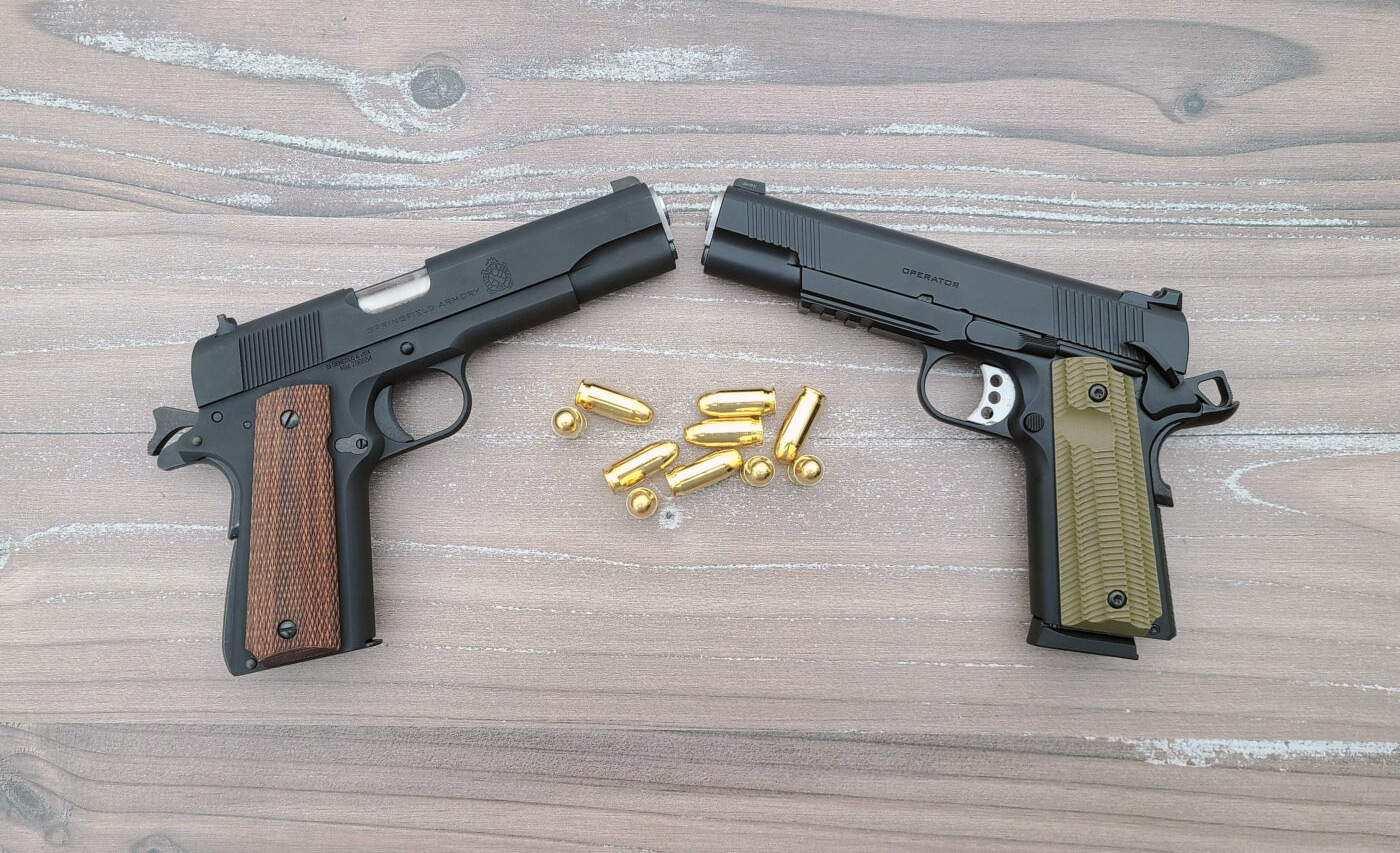
I decided to pull my Springfield Mil-Spec 1911 out of the safe to compare the modern features the Operator offers against the classic styling of this more basic 1911. Professional reviewers consider the Springfield Armory Mil-Spec 1911 one of the closest replications of the original 1911 in today’s market.
Although it doesn’t have all the modern features we see on the Operator, the Mil-Spec 1911 is a fine shooter. And, it does have some modern enhancements, including a stainless steel match grade barrel, lower and flared ejection port, and three-dot sights, to name a few.
The Mil-Spec embodies everything that 1911 traditionalists enjoy about the 1911 platform. The Mil-Spec 1911 has a parkerized frame and slide finish, and it ships with a seven-round .45 ACP magazine, which is the standard capacity for the original 1911.
What’s Different?
Let’s begin with the rear of the pistols and work our way to the muzzles. The Operator has a flat mainspring housing with Springfield’s “Octo-Grip” texturing. The Mil-Spec has a traditional arched mainspring housing with vertical serrations. The arched housing deepens the overall thickness of the grip.

The Mil-Spec’s beavertail grip safety is much shorter than the extended and curved beavertail of the Operator. Also, the Operator’s grip safety has a memory bump that is not found on the Mil-Spec 1911.
The Details
The trigger and hammer on the Operator are skeletonized, and the single-action trigger on my test model measured 4.5 lbs. The Mil-Spec 1911’s un-skeletonized single-action trigger is metal and measures 4.75 lbs. on my test model. The trigger pull weights on the two pistols are very close.
At first glance, one will immediately notice the difference between the grips of the two pistols. The Mil-Spec has diamond checkered wood grips, while the Operator uses more modern G10 grips.
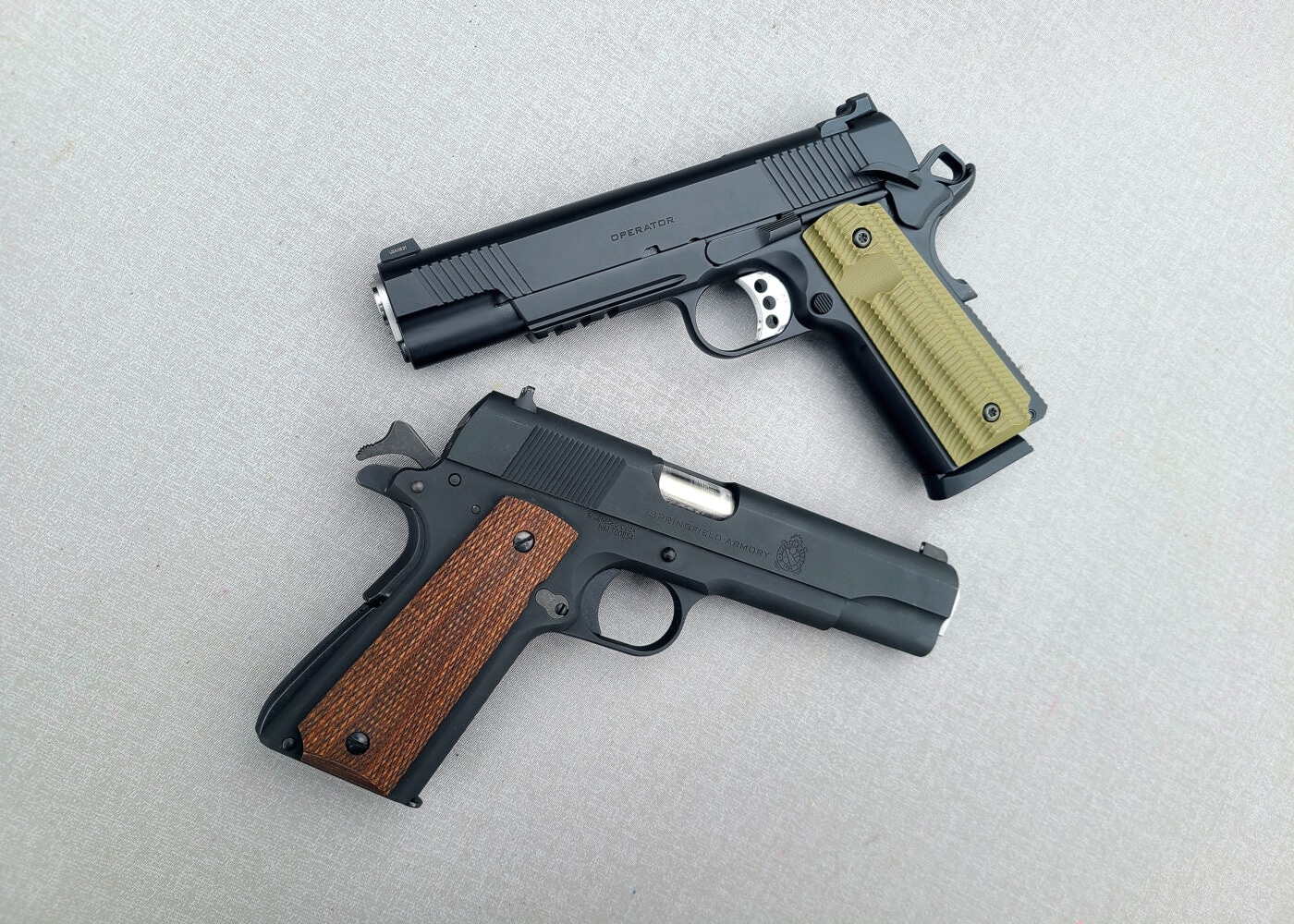
The thumb safety on the Operator is much larger and easier to engage than that of the Mil-Spec 1911. It’s ambidextrous, which is beneficial to left-handed shooters. But, the Mil-Spec’s is simple, slim and effective.
The original rear slide serrations on the Mil-Spec 1911 are thin and tight. The Operator has both rear and forward slide serrations that are wider and deeper, which aids with easier charging and performing press checks. However, the Mil-Specs provide a much more classic look.
Similar Concerns
Let’s first understand that both of these 1911 handguns are quality-made with the finest materials. Both have amazing build craftsmanship, which is certainly noticeable when you are shooting them.
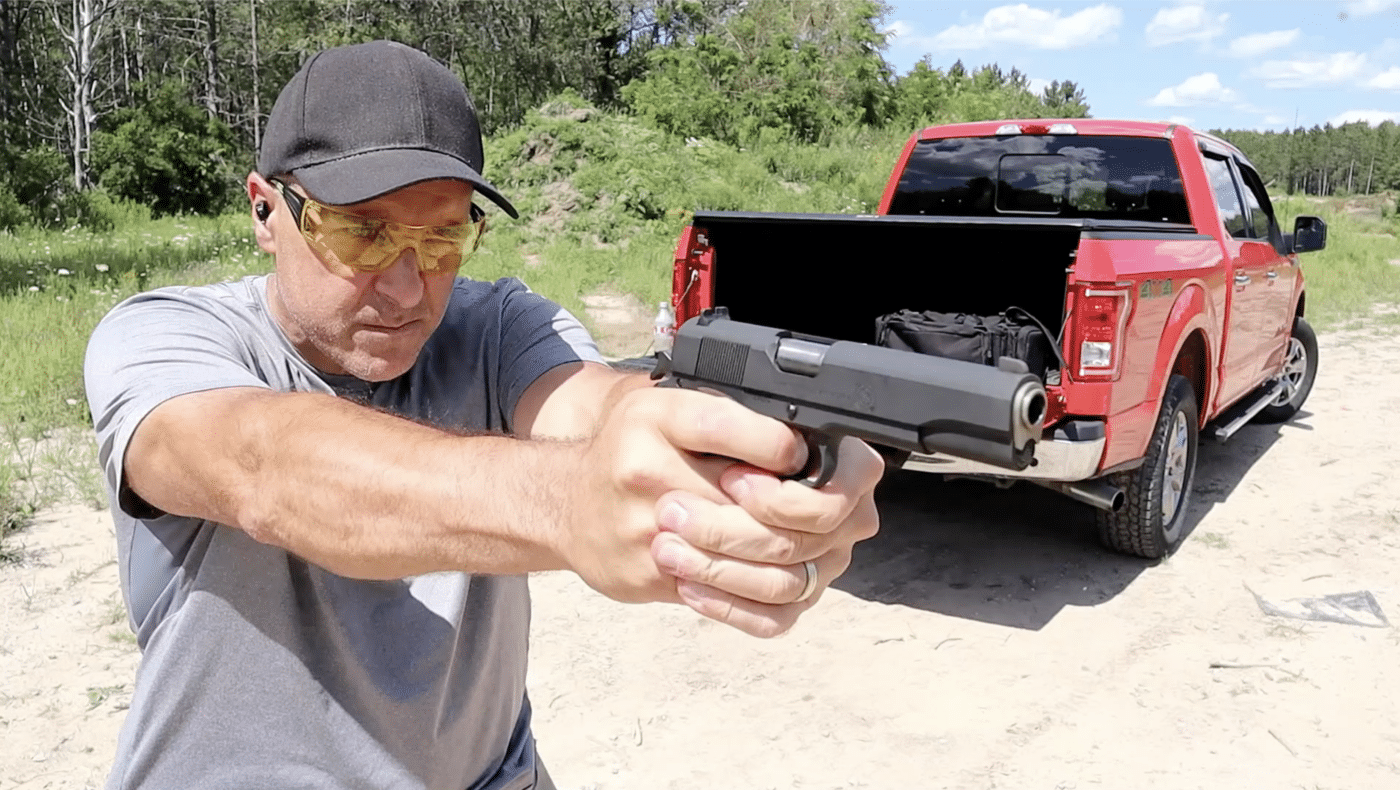
Both the Operator and the Mil-Spec 1911 have forged steel frames, slides and match-grade barrels. To use the strongest type of steel tells me that Springfield spares no expense with their line of 1911 pistols. Also, the recoil spring system, using a proven GI-style guide rod, is consistent with both handguns. That basically translates to an original design that has reliably stood the test of time. It also means the disassembly process is the same for both 1911 handguns. See the attached video for a demonstration of the disassembly of each.
What’s the Cost?
The MSRP on the Mil-Spec 1911 is $709, while the MSRP on the Operator is $1,159. No worries about the math, I have you covered. That’s a price difference of $450. The question remains, is the Springfield Armory Operator 1911 worth the additional dough?
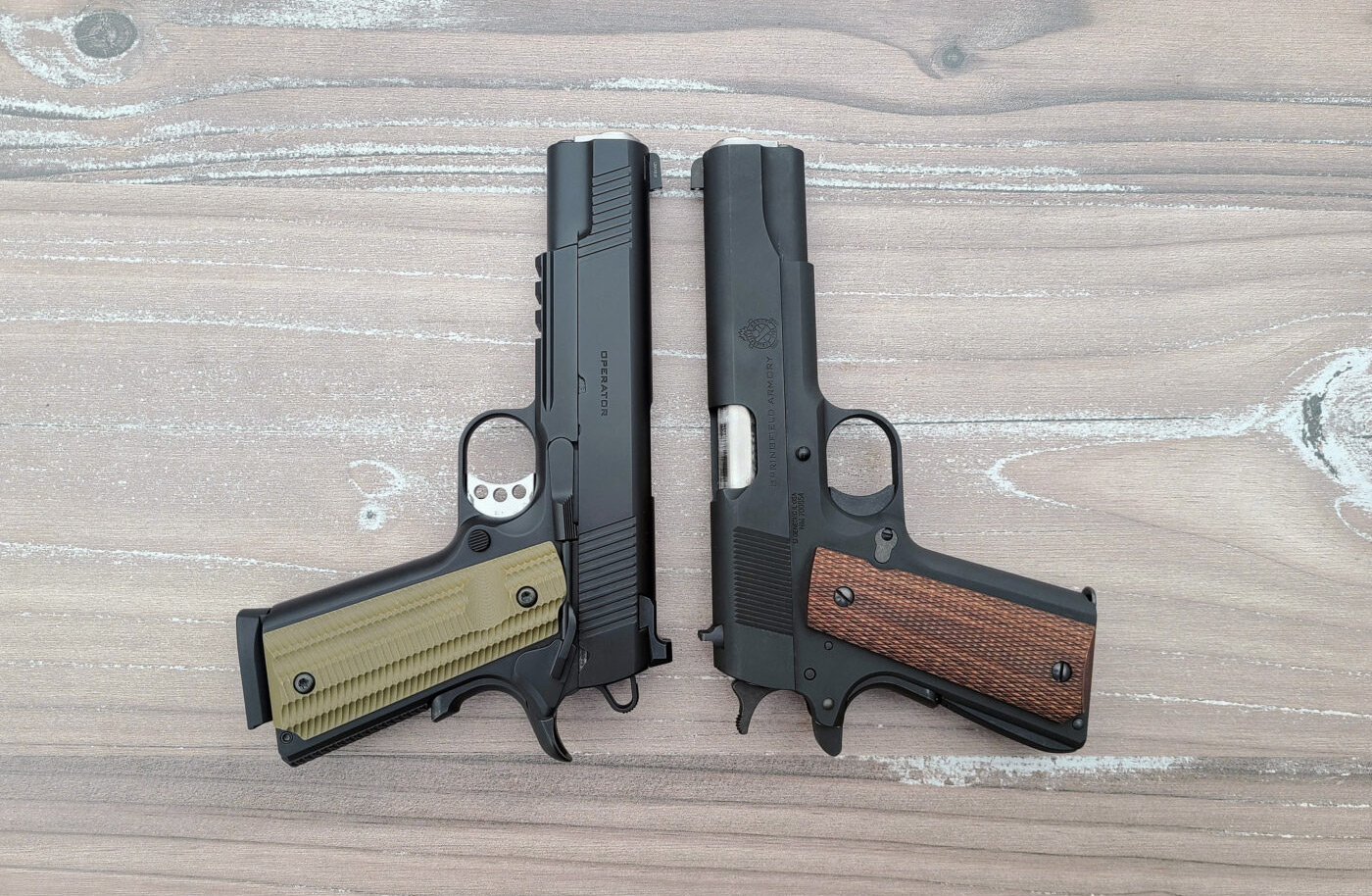
Let me address that question this way. In mid-summer, Springfield introduced the Emissary 1911. I was able to get my hands on it and was so excited about how well it shot. The Emissary shot more accurately than my ability allows me to shoot. Since then, I have not been able to achieve anywhere near the Emissary’s accuracy until I fired the Operator.
When I took the first few shots with the Operator, I knew that 1911 was a winner. Is the Mil-Spec 1911 worthy? Absolutely it is. However, I am a huge 1911 fan that enjoys modern features. I love the look and feel of the Operator. The front night sight, Picatinny rail, eight-round magazines and the G10 grips suit my style perfectly.
Conclusion
The bottom line is, the two 1911s in this comparison are first-class handguns. I understand there is a large market of 1911 traditionalists who would choose the Mil-Spec 1911 10 out of 10 times. They prefer the closest replica from John Browning’s 1911 design as possible. I understand and appreciate that mindset. Also, the pistol makes a great (and affordable) foundation for a custom gun to tweak and modify exactly as you want it.
However for me, the Operator 1911 gives me everything I want in a 1911 with no need to add on parts or modify anything. I believe the modern features the Operator offers helped me shoot even better than I do with the Mil-Spec. To top it off, I love beautiful firearms — and the Operator is truly a beauty.
So there you have it. The Operator is a hands-down winner for me, but I would not feel at all shortchanged or undergunned with the Mil-Spec. And if I were on a tight budget or looking for a solid base gun for a custom 1911 project, the Mil-Spec would be my first choice. So, now you have to decide!
Editor’s Note: Please be sure to check out The Armory Life Forum, where you can comment about our daily articles, as well as just talk guns and gear. Click the “Go To Forum Thread” link below to jump in!
Join the Discussion
Featured in this video
Continue Reading
Did you enjoy this video?

 360
360




